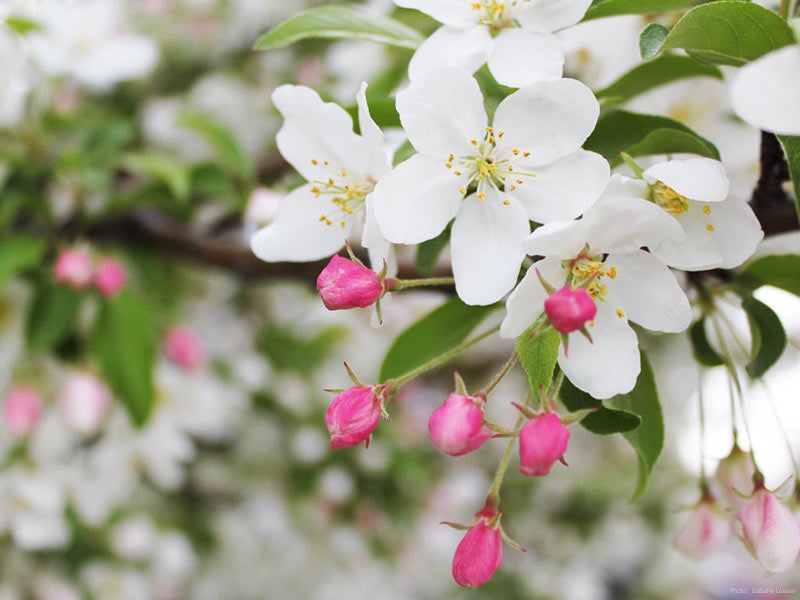Apr 30, 2019

You’re out on a walk in your neighbourhood, and the delicious scent of spring blossoms seems to follow you everywhere you go. The sweet blooms of lilacs, flowering currants and service berries leave you feeling joyful, knowing the promise of the gardening season lies ahead. Fiddleheads uncoil, while Virginia bluebells and wild columbine display their stunning petals. Delightful bird songs become part of everyday background noise, and you notice catbirds reappear with flycatchers and orioles. Smaller creatures bustle about: a blister beetle crawls among your coral bells, black flies help pollinate blueberries and a crab spider camouflages itself among white petals. It’s time to really start digging…
Wildlife
- Clean up seed hulls from under bird feeders.
- Clean and fill the bird bath regularly.
- Provide a source of water for thirsty birds, amphibians and insects.
- Clean hummingbird feeders and replenish food regularly.
- Allow a grace period for animal intruders that have set up house until their young are mature.
- Look out for birds on early spring mornings, one of the best times for birdwatching.
General Garden Chores
- Set up a rain barrel to catch water for garden use. Keep a cover on the barrel when it’s not in use to prevent an unwanted mosquito-breeding site and keep thirsty creatures from drowning.
- Pull weeds or hoe them when they are small. Weeds pull more easily after rain.
- Begin to stake plants that will eventually need support.
- Mulch plants to maintain moisture over dry summer months. Cover the soil between plants, but leave an air space around the stems and centres of the plants.
Planting and Pruning
- Plant coniferous trees such as pine, cedar and spruce in late spring, once the soil warms, or early fall, when the leaves start to change colour.
- Wait for all danger of frost to pass before setting out tender annuals in late spring or early summer.
- Plant summer- and fall-blooming bulbs.
- Plant any newly purchased perennials if you haven’t already.
- Plant for continuous blooms throughout the growing season, keeping in mind the needs of wildlife. Design link
- Plant or place mint around your house if ants tend to get into your home, although keep in mind that mint can quickly become invasive and pots or barriers may be beneficial.
- Acclimatize any seedlings started indoors before planting them outside. Use temporary "houses" outside to shield them from heavy rain, strong winds or temperature dips until they get used to the weather.
- Prune maples and birches, which bleed in early spring, or wait for early summer.
